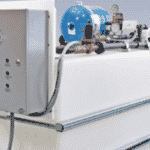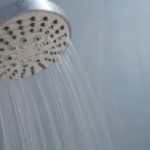For countless homeowners reliant on well water, the fear of turning on the tap only to find no water flowing is all too real. Whether it is the first cup of coffee in the morning that cannot be made or a shower that abruptly ends in a trickle, the implications of a dry well extend far beyond mere inconvenience—they touch the essence of daily living. As the backbone of your home’s water supply, the well is more than just a structure in the ground; it is a lifeline that sustains your household’s needs, from cooking and cleaning to gardening and personal hygiene.
Recognizing the early warning signs of a well’s declining performance is crucial for homeowners reliant on well water. Symptoms such as a noticeable decrease in water pressure, the disconcerting sound of air gurgling through the pipes, a visible decline in water clarity, or a pump that operates continuously signal that your well may be struggling to meet your water needs.
Addressing these issues promptly can prevent more severe complications, such as complete well failure, and ensure the long-life and reliability of your water supply. Understanding and responding to these signs enables homeowners to seek targeted solutions and technological innovations to safeguard against future water scarcity.
What Causes Wells to Run Dry During the Day?
Top Reasons a Well Runs Dry
- Aquifer Depletion: The most fundamental reason wells run dry is the aquifer’s depletion from which they draw water. Aquifers are underground layers of water-bearing rock or materials from which wells extract water. When the water withdrawal rate exceeds the natural replenishment rate, the aquifer’s water level drops. This situation is often exacerbated by prolonged drought conditions, which reduce the amount of surface water infiltrating down to recharge the aquifer. For example, in parts of California, extensive agricultural irrigation has significantly dropped aquifer levels, causing many wells to run dry.
- Seasonal Variations and Climate Change: Seasonal fluctuations in water availability can cause wells to temporarily run dry, especially in regions with distinct wet and dry seasons. During dry seasons, reduced rainfall leads to lower aquifer recharge rates. Climate change intensifies this problem by altering precipitation patterns and increasing the frequency and severity of droughts, thus affecting groundwater levels more dramatically. The case of wells running dry in parts of Africa, where seasonal rains have become less predictable and more erratic due to climate change, underscores this issue.
- Overpumping and Well Interference: In areas with high concentrations of wells, such as agricultural or densely populated regions, excessive pumping can lower the water table around each well, creating what is known as a “cone of depression.” When multiple cones of depression overlap, it can lead to well interference, further exacerbating water scarcity for each well. This is particularly common in agricultural regions where irrigation demands can lead to competitive over-extraction of groundwater.
Can Using a Dry Well Damage the Pump and Plumbing System?
Yes, using a dry well often causes short-term and long-term problems. The gains of getting a little water in the present only create expensive issues down the road.
How do You Know if Your Well is Running Dry?
Decreased Water Pressure:
A notable decrease in water pressure across various household fixtures can be a preliminary sign that your well is running low on water. This manifestation can vary from a gradual reduction, where water flow weakens over time, to a sudden drop, potentially indicating a critical depletion of your well’s water supply. Monitoring water pressure while using multiple fixtures simultaneously (e.g., showering while the washing machine is running) can help gauge the severity of the decrease. Consistently low pressure, especially during peak usage times, suggests that the well cannot keep up with demand, due to a lowered water level.
Sputtering Faucets:
When air is drawn into the water lines, it can cause an intermittent water flow from your faucets, characterized by sputtering or spitting. This issue arises when the water level in the well drops below the pump intake, allowing air to enter the system alongside the water. This phenomenon is more pronounced after prolonged water use or when attempting to use water after a period of inactivity, such as first thing in the morning. Listening to unusual noises from the plumbing, like gurgling or bubbling, can also indicate air in the system.
Changes in Water Quality:
A declining well may yield water that appears murky, colored, or laden with sediment, a stark contrast to the clear water it typically provides. These changes occur as the water level falls and the pump draws closer to the well’s bottom, where sediment and other particulates settle. Additionally, water from a depleting well might exhibit unusual tastes or odors, signaling the presence of minerals or sediments previously undisturbed. Regularly comparing water clarity and quality over time can help identify these changes early.
Pump Running More Frequently or Continuously:
An overactive well pump that cycles more frequently or operates non-stop often struggles to maintain adequate water pressure due to a decrease in the well’s water supply. This condition stresses the pump system, leading to potential premature failure and significantly increasing energy consumption. Monitoring the pump’s activity, particularly noting any changes in its cycling pattern or listening for constant operation, can provide early warnings of a water level issue.
When in doubt, check
Checking the Well’s Static Water Level:
Measuring the static water level in your well offers a direct assessment of its water supply status. This measurement is best taken during inactivity, typically after a night of no water usage, to allow the well to recharge. Employing a water level sounder or a simple DIY method involving a weighted line marked at regular intervals can provide this measurement. Compare these levels over time to track any decline. Significant, consistent drops in the static water level indicate a reduction in the aquifer’s ability to replenish your well, necessitating further investigation or remediation efforts, such as well deepening or augmentation of the water supply.
How Can You Prevent Your Well from Running Dry Again and Again?
Preventing your well from running dry repeatedly requires an approach that addresses both the supply and demand sides of your water system. At Well Manager, we specialize in optimizing low-yielding wells and water systems to ensure reliable water supply and enhanced performance, even for wells previously considered inadequate or unusable. Here is how our services and products can help prevent your well from running dry:
- Optimized Water Distribution: Our engineered solutions are designed to maximize the efficiency of water distribution from your well. By managing the water draw to align with the well’s natural replenishment rate, we prevent the overtaxing of your well, ensuring it does not run dry under normal usage conditions.
- Peak Demand Management: One of the challenges with low-yielding wells is meeting peak demand, such as during morning routines or when running multiple water-consuming appliances simultaneously. Our systems intelligently manage water storage and distribution to meet these peak demands without over-drawing from the well, thus preventing it from running dry.
- Enhanced Well Yield: Our patented technology can improve yield by optimizing the draw from the existing water source for wells struggling to meet household water needs. This approach can make previously unusable wells viable, providing a sustainable water source for your home or building.
- Custom Engineered Systems: Recognizing that every water system has unique challenges, Well Manager offers the most prominent family of patented, engineered, off-the-shelf solutions tailored to your needs. Whether it is a single-family home, a commercial building, or a community water system, we can design a system that ensures your well does not run dry.
Love Your Water with Well Manager
By incorporating Well Manager’s comprehensive solutions, you can significantly reduce the risk of your well running dry. Our mission is to ensure that you have access to more water and better performance from your water system, regardless of its current state. With approximately 1500 systems already in the field, Well Manager has a proven history of success.






